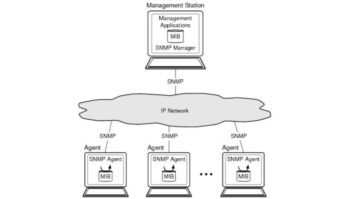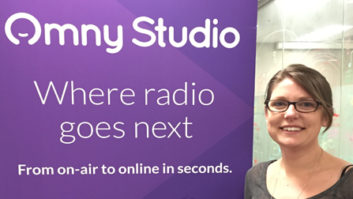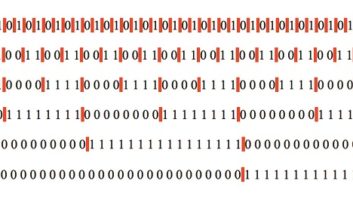Terms like gigabyte and terabyte are part of our everyday language. Others like 1080p, HD Radio and HDMI can also be classified as part of our daily technical vernacular in the radio business, but only a few years ago they were virtually unknown to most.
This is a brief study of “the now” in broadcasting and a glimpse at the not-too-distant future.
The focus of engineers continues to be on larger storage capacity, faster data transmission, smarter broadcasting and greener engineering.
Just in terms of data storage, most of us are only now poised to think in terms of terabytes and petabytes. Data transmission rates of gigabits-per-second will give way to terabits-per-second too.
Radio World readers are familiar with HD Radio, Digital Radio Mondiale and Digital Radio Express/FMeXtra. But what other technological advances will change the way we live, work and speak?
Where do you come from?
The English language is in a constant state of evolution. Many words common in the 1800s and 1900s are no longer considered useful in the 21st century.
According to the Global Language Monitor, there are approximately 1 million words in the English language. A personal vocabulary of 7,500 words is considered to be necessary in order to write and speak fluently.
As you can guess, there are many words that will cease usefulness as others find their way into our everyday parlance. While a spittoon is certainly not in vogue any more, when was the last time you heard someone ask for an ashtray? Sure, these are not technical terms, but they have seen their day. When was the last time you heard someone talk about dropping a needle on a record?
Let us take a moment and examine the word “radio.”
We have all been touched by this technology throughout our personal lives and careers. Radio originally was called “wireless telegraphy,” which was shortened to “wireless.” The word “radio” was first used in 1897 by French physicist Edouard Branly when he wrote about radioconductors. The term is based on the Latin word “radius,” which means “the spoke of a wheel; a ray of light.”
The use of the word “radio” as we know it appeared in a 1907 article by Lee de Forest but creation of the word is credited to a marketer, Waldo Warren.
In 1912, the U.S. Navy adopted the use of the word “radio” and by the time commercial broadcasts began in the 1920s, “radio” became the common word used to refer to the actual transceiver.
It is interesting to note that the term “wireless” has been revitalized. One hundred years ago, “wireless” was used to describe radio; today it is used as a reference to wireless networking and Internet connections.
Jargon is words specific to a profession, group or activity. If you sail, you would be familiar with jib, halyard and leeward. If you are a philatelist, terms like perforations, hinges and possessions take on new meaning. Computer-related jargon continues to grow as technology improves and needs of users evolve as quickly.
Can you remember the first time you heard of Microsoft Vista or XP? At first these sounded strange; now most of us use them as commonplace terms.
According to the Global Language Monitor, the most common jargon in the world is “O.K,” the abbreviation for Old Kinderhook, the nickname of our eighth president, Martin Van Buren. Kinderhook is a reference to the town of his birth in New York. In Van Buren’s 1840 campaign for re-election, his slogan was “Martin Van Buren is O.K.” Today, the term is synonymous with “all is well.”
The Monitor recently published the “10 Most Confusing Yet Frequently Cited High-Tech Buzzwords” of the past year. Here it is, with its original comments:
- Cloud Computing — Distributing or accessing programs and services across the Internet. (The Internet is represented as a cloud.)
- Green washing — Repositioning your product so that its shortfalls are now positioned as environmental benefits: Not enough power? Just re-position as energy-saving.
- Buzzword Compliant — Including the latest buzzwords in literature about a product or service in order to make it “resonate” with the customer.
- Resonate — Not the tendency of a system to oscillate at maximum amplitude, but the ability to relate to (or resonate with) a customer’s desires.
- De-duping — shorthand for de-duplication, that is, removing redundant data from a system.
- Virtualization — Around since dinosaurs walked the planet (the late ’70s) virtualization now applies to everything from infrastructures to I/O.
- Web 2.0 — Now there’s talk of Web 3.0, just when we were finally getting used to Web 2.0.
- Versioning — Creating new revisions (or versions) with fewer bugs and more features.
- Word Clouds — Graphic representations of the words used in a text, the more frequently used, the larger the representation.
- Petaflop — A thousand trillion (or quadrillion) floating point operations per second . Often mistaken as a comment on the environmental group.
(As a matter of reference, the 2007 list included iPod, Flash, Cookie and Nano. Past entries include HTTP, Voice Over IP, Megapixel, Plasma, Robust, WORM and Emoticon.)
Storage
In 1991 I purchased my first desktop computer for use at home; it was a Packard Bell with a 286 megahertz (MHz) processor with a 40 megabyte hard drive for storage space.
By today’s standards, the processing speed and storage capacity are laughable, but this does give us some perspective of how far we have come in relation to the norms for storing data.
Fifteen years ago we were talking of tens and hundreds of megabytes, but in 2009, we are all ready to retire the term gigabytes in favor of terabytes and petabytes as our engineering paradigms continue to evolve along with technology.
As costs for storage go down and the demand for greater storage capacity rises, we witnessed the inclusion of terms like bits and bytes into most every language on the globe.
We were also participants and spectators to the inclusion of terms like kilobyte, megabyte and gigabyte as these larger storage levels were incorporated into our lives at work and at home.
While the use of the terms terabytes and petabytes are achieving greater importance, it is apropos that we look at storage from the bit up to the yottabyte.

For most, this is a simple review of data storage and the terms associated with specific data storage capacities, but it does offer a perspective of how much data is stored at levels we have used, and have yet to use, in our daily lives.
A bit is the basic form of data upon which all others are built. A bit can be one of two digits, a 0 or a 1. As a binary digit, a bit is not only the basis of all digital communications but digital storage.
Data transfer rates usually are described in terms of bits per second (bps), but for the sake of this discussion, we will focus on the use of bits as data storage units.
Computers have always used the binary system and will likely continue to do so in the foreseeable future. When stringing a series of bits together, we achieved a byte. When first used, a byte was made of various strings of bits, but it is generally accepted that eight bits constitute one byte. For those of you who prefer, a byte is also called a word.
As the storage capacity needed for documents and computer programs grew, the amount of needed storage space also grew.
When approximately a thousand bytes of space was needed on a hard drive, this was simply called one kilobyte. The true definition of one kilobyte in the binary system is 1,024 bytes, but it is usually used to mean approximately one thousand bytes. In decimal systems, a kilo means 1,000, but a kilobyte is also known by its binary system designation of 210 since this is the power of 2 which is closest to one-thousand.
Kilobyte is often shortened to K or KB, though the Institute of Electrical and Electronics Engineers (IEEE) recommends using the small letter k for a kilo in the decimal system while using a capital K when referring to a kilo when used in the binary system.
Demands for more storage continued to rise over time. To meet that demand, devices capable of storing megabytes, or thousands of kilobytes, were produced.
The need for one thousand kilobytes (actually 1,024 kilobytes) brought us up to a storage level of one megabyte; 1,024 megabytes took us further to one gigabyte while the need to store 1,024 gigabytes started the use of one terabyte as the next generation of storage and storage terminology.
One terabyte hard drives now are available readily through major electronic retailers for no more than a few hundred dollars each.
Companies like Cisco work with petabytes of storage capacity, or roughly 1 quadrillion bytes per petabyte. In 2005, Cisco’s storage for their marketing, sales and human resources departments was over two petabytes; in 2007 they reached 11 petabytes. How long before Cisco is dealing with storage area networks with a combined total of exabytes or more?
Fig. 1 sums up storage capacities and their associated terms; some of which we have yet to adopt for everyday use.
There are many terms like gigabyte and terabyte we use regularly and without hesitation. Next time, in the concluding part of this article, I’ll touch on other terms that may find their way into our lives as we continue to improve operations through larger storage capacity, faster data transmission, smarter broadcasting and greener engineering.
The author is director, program and operations support for Radio Free Asia in Washington.
This article is based on a presentation by the author at the 2008 NAB Show Broadcast Engineering Conference. Material is copyright Radio Free Asia.










